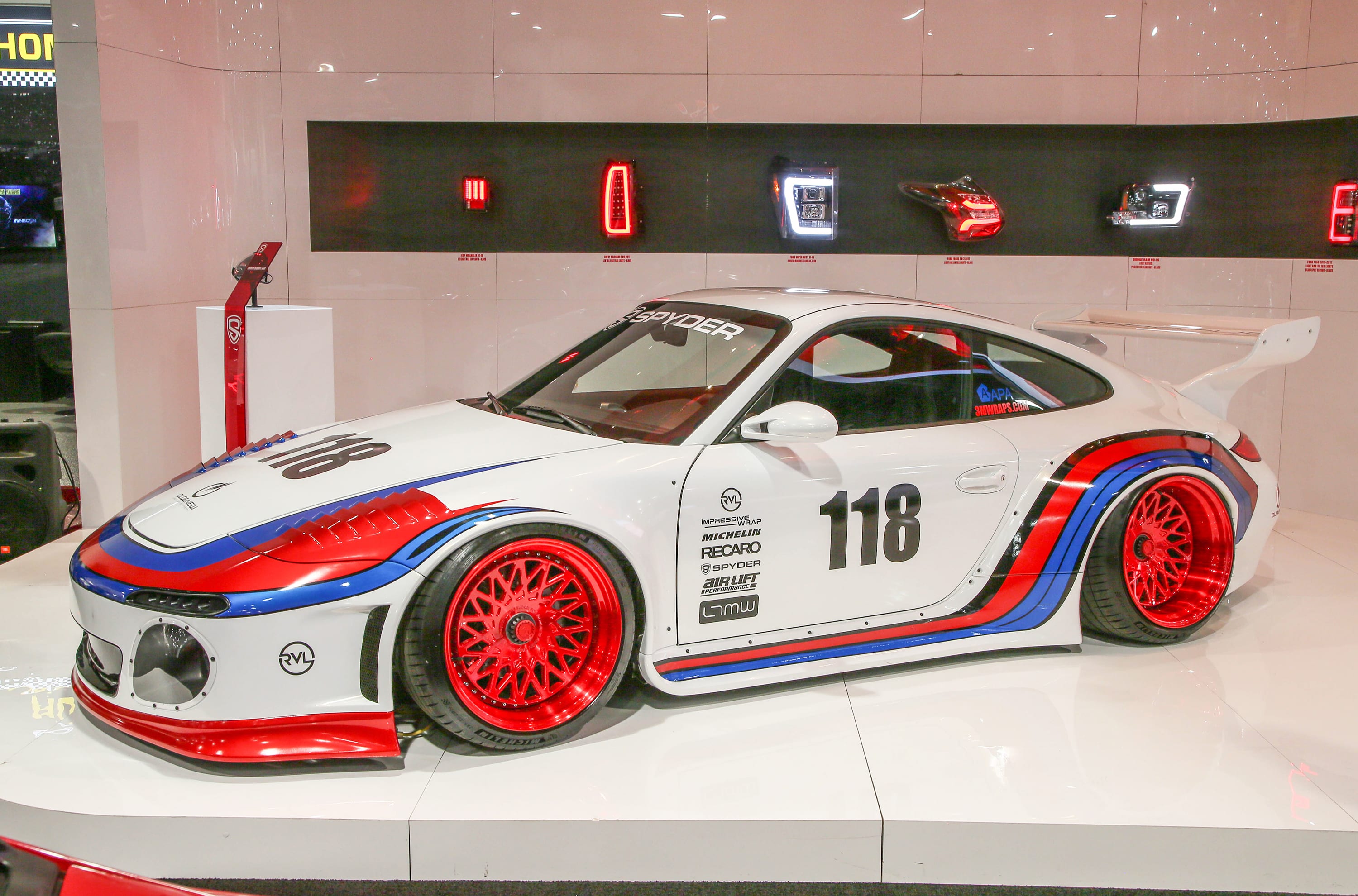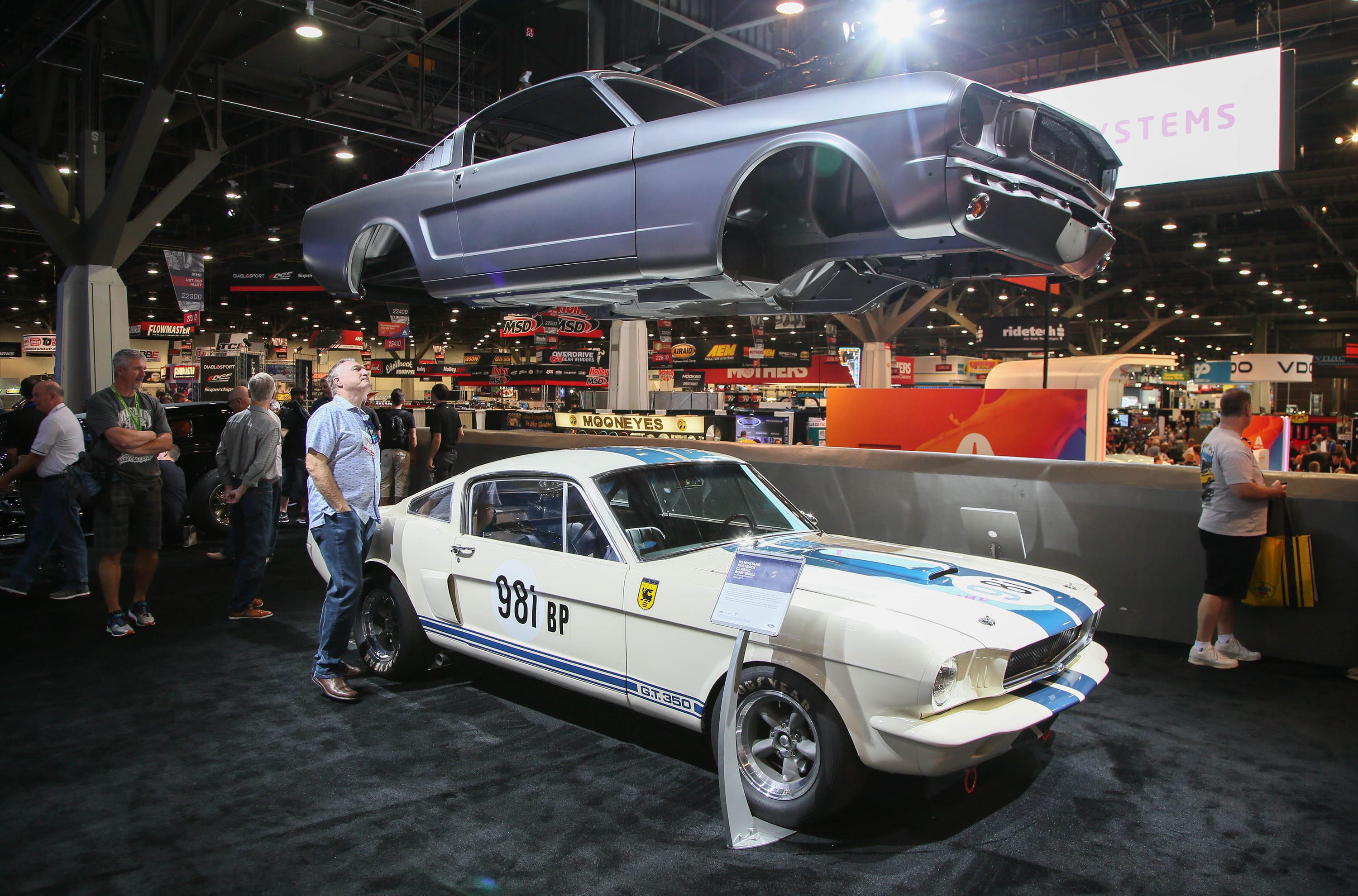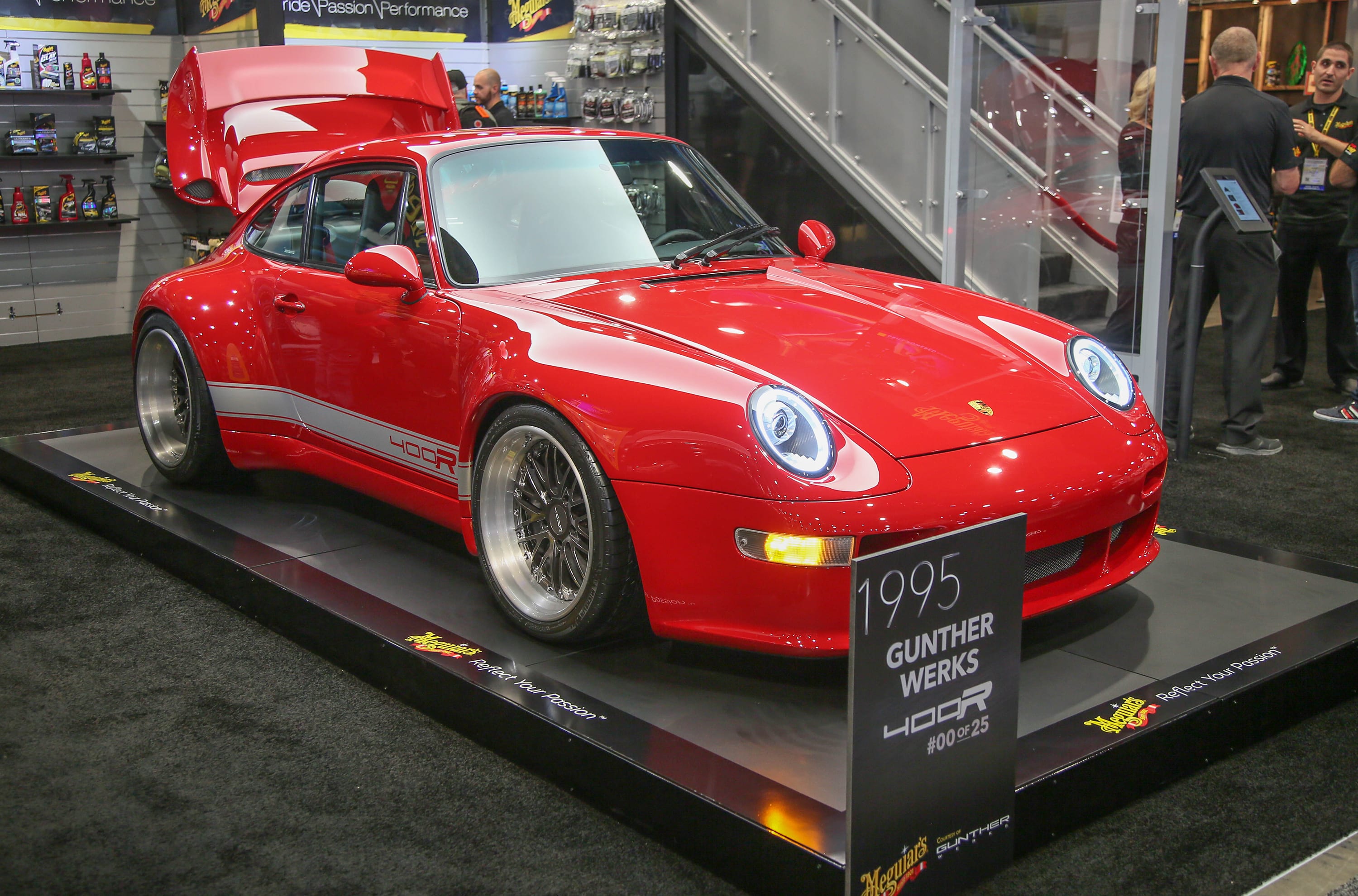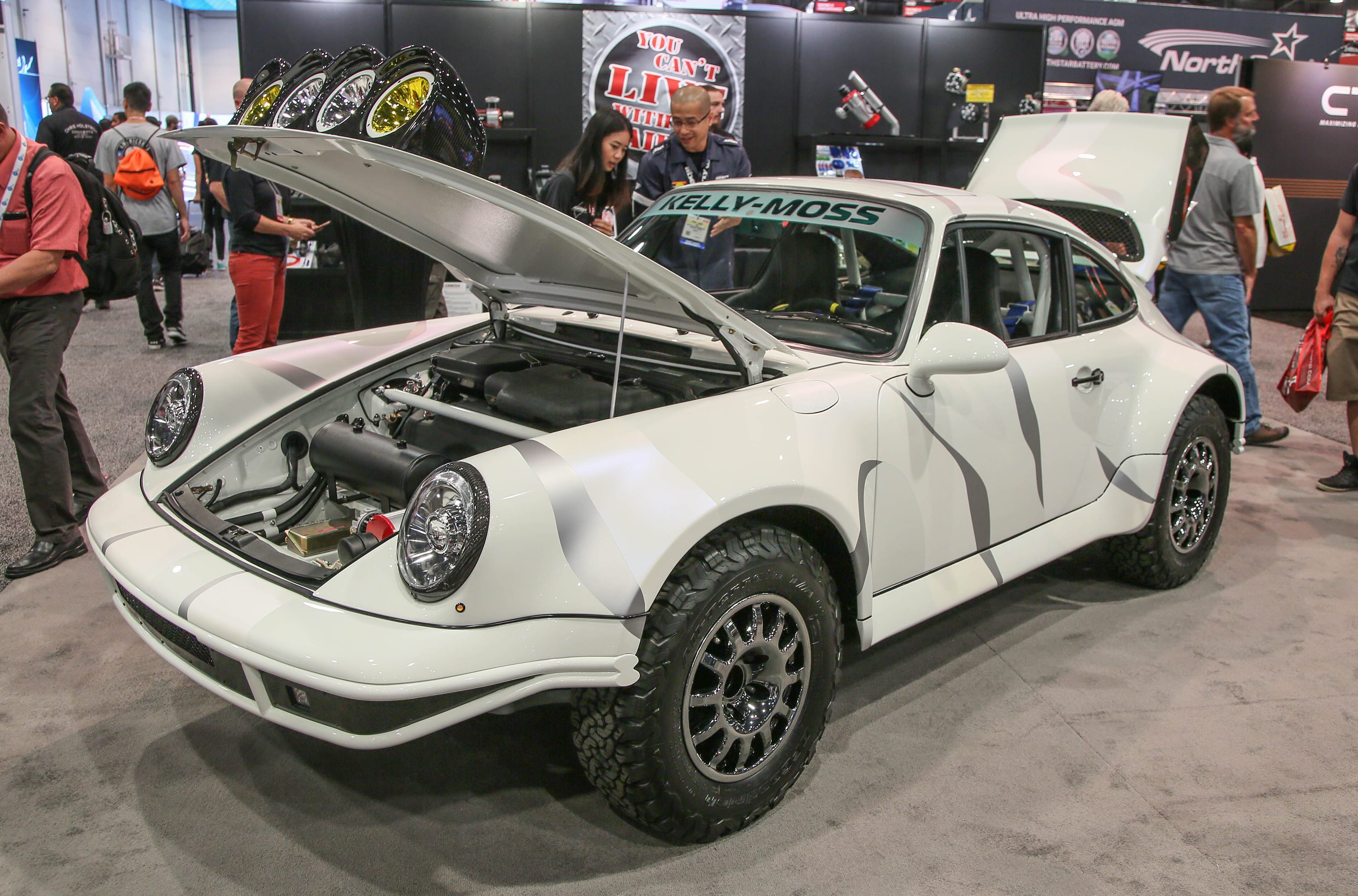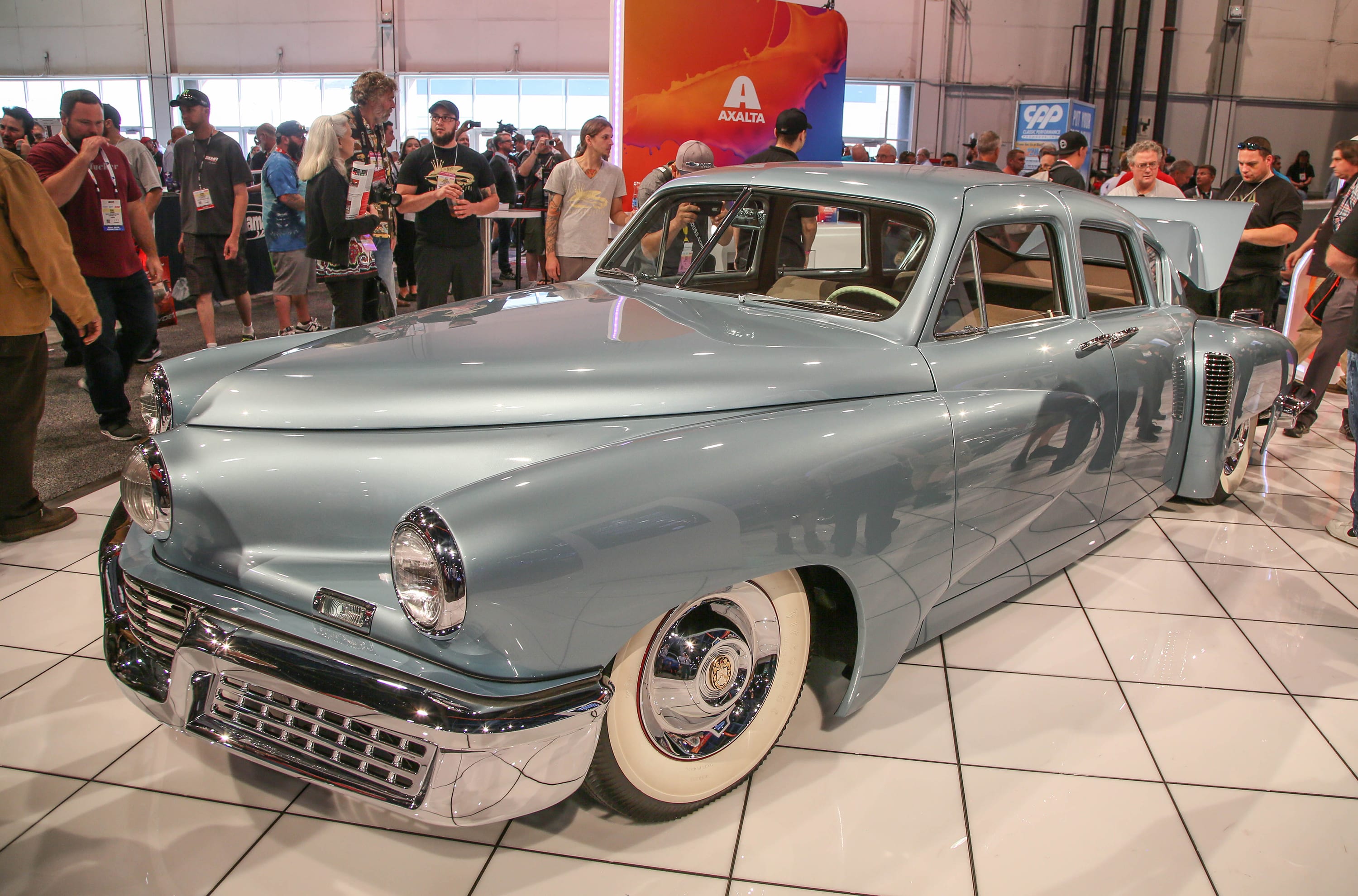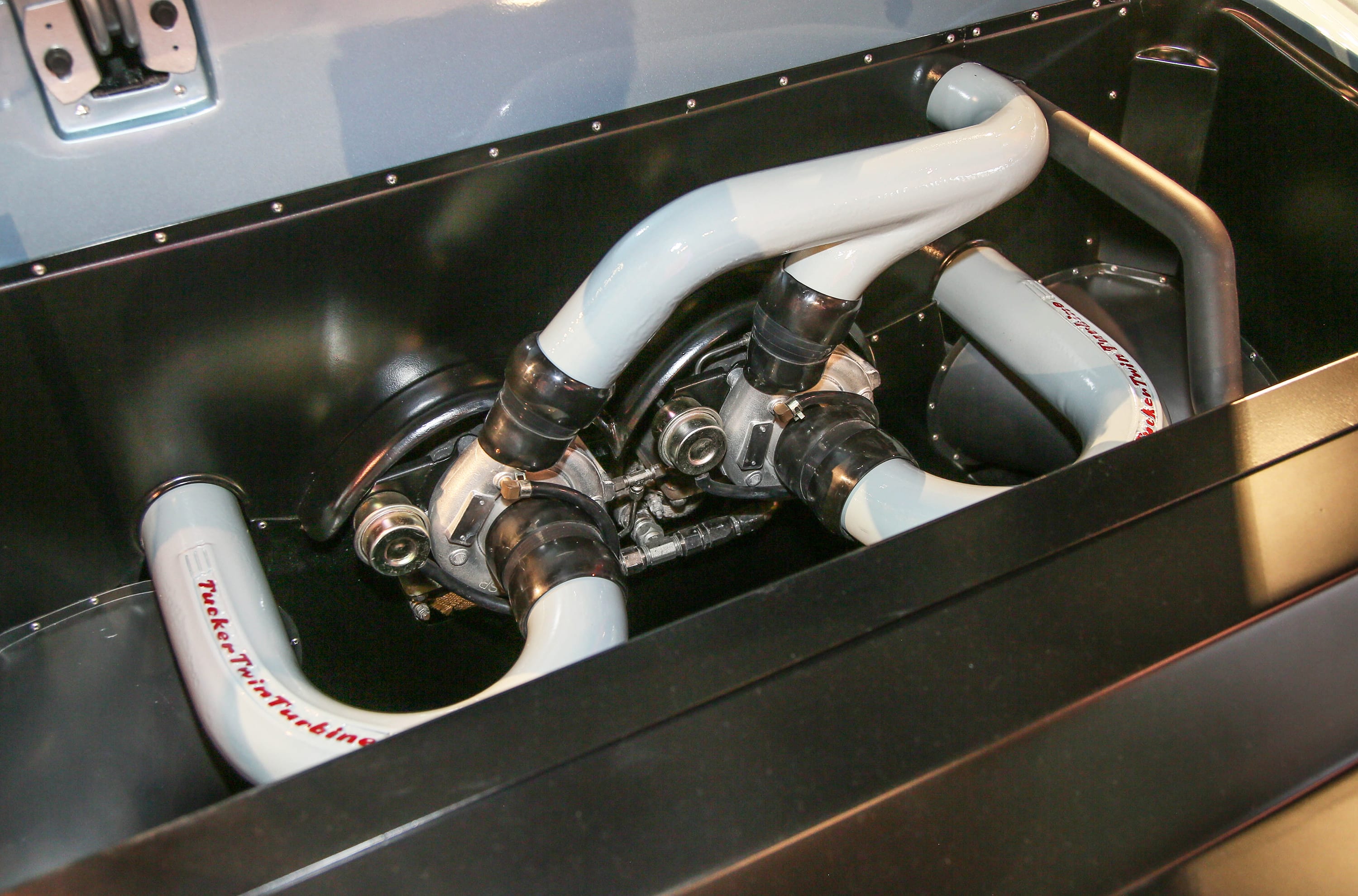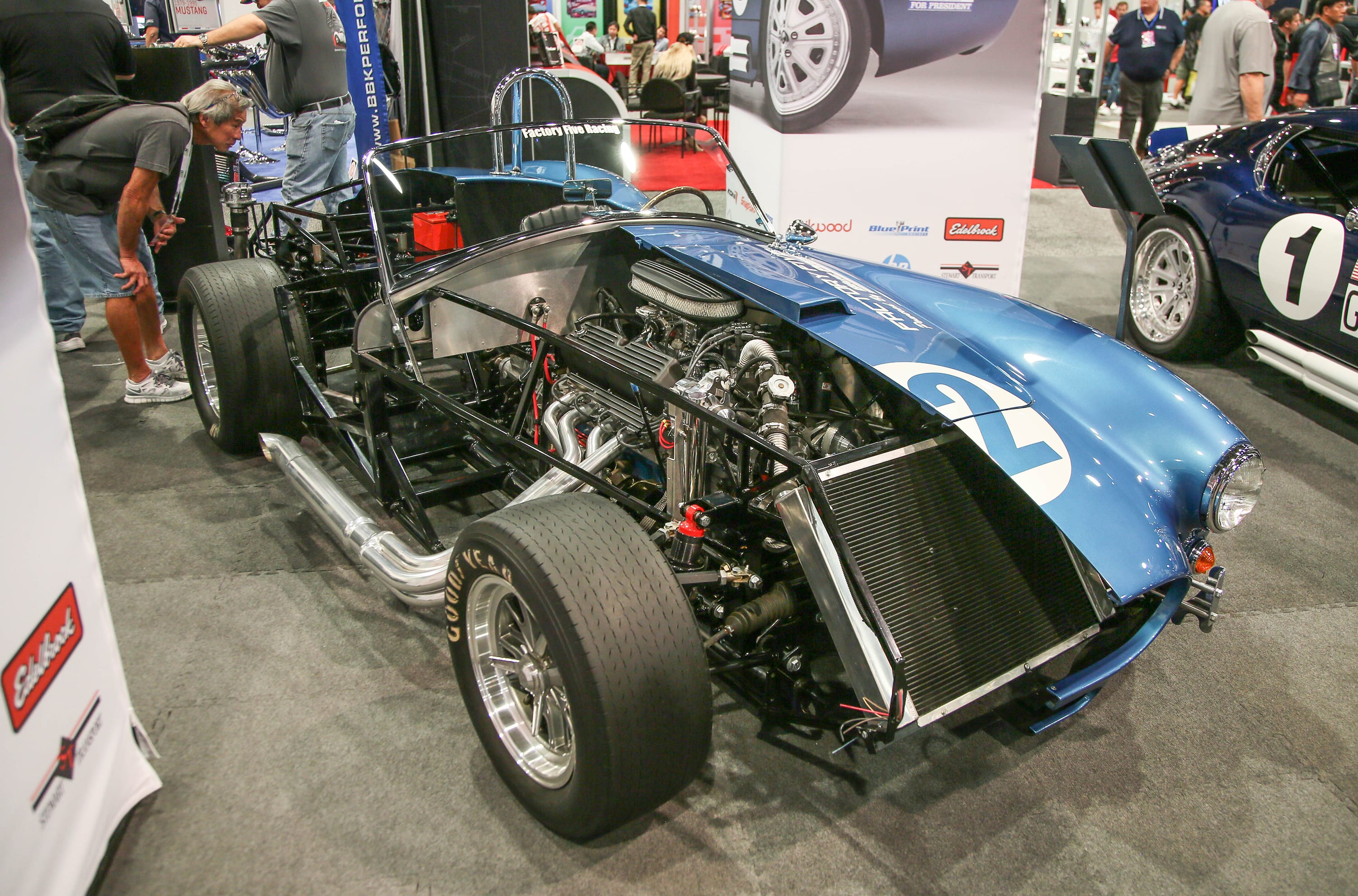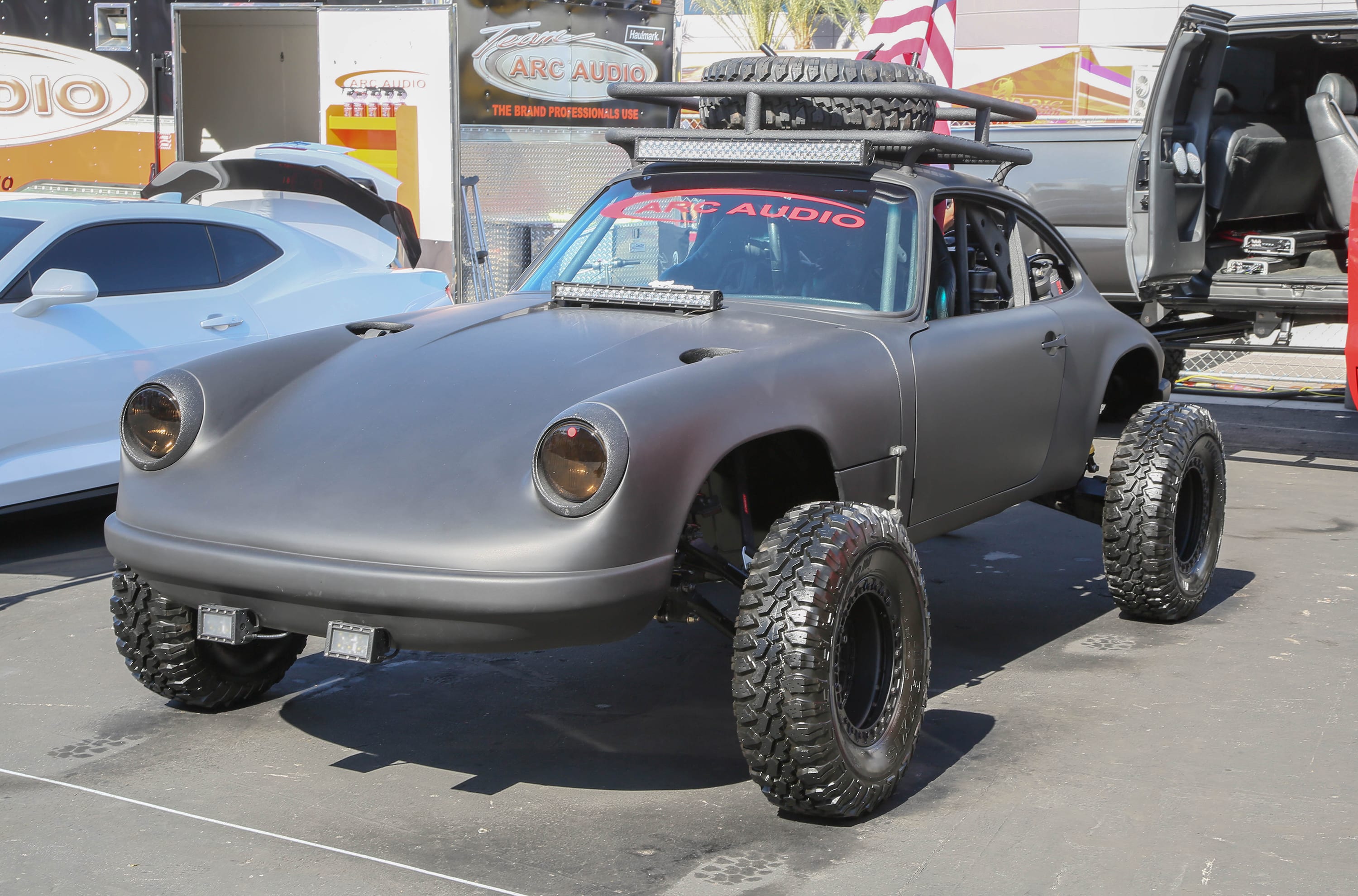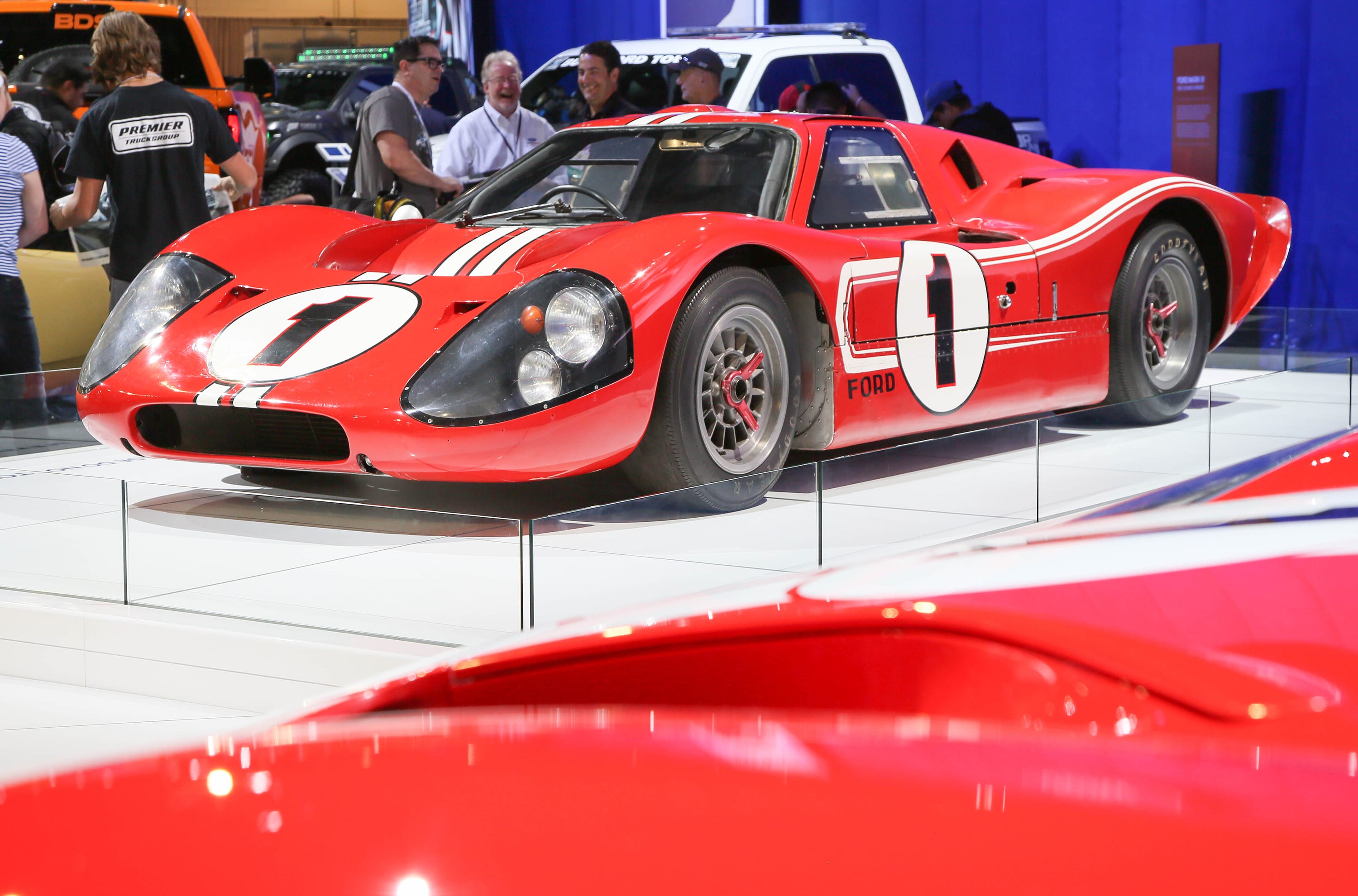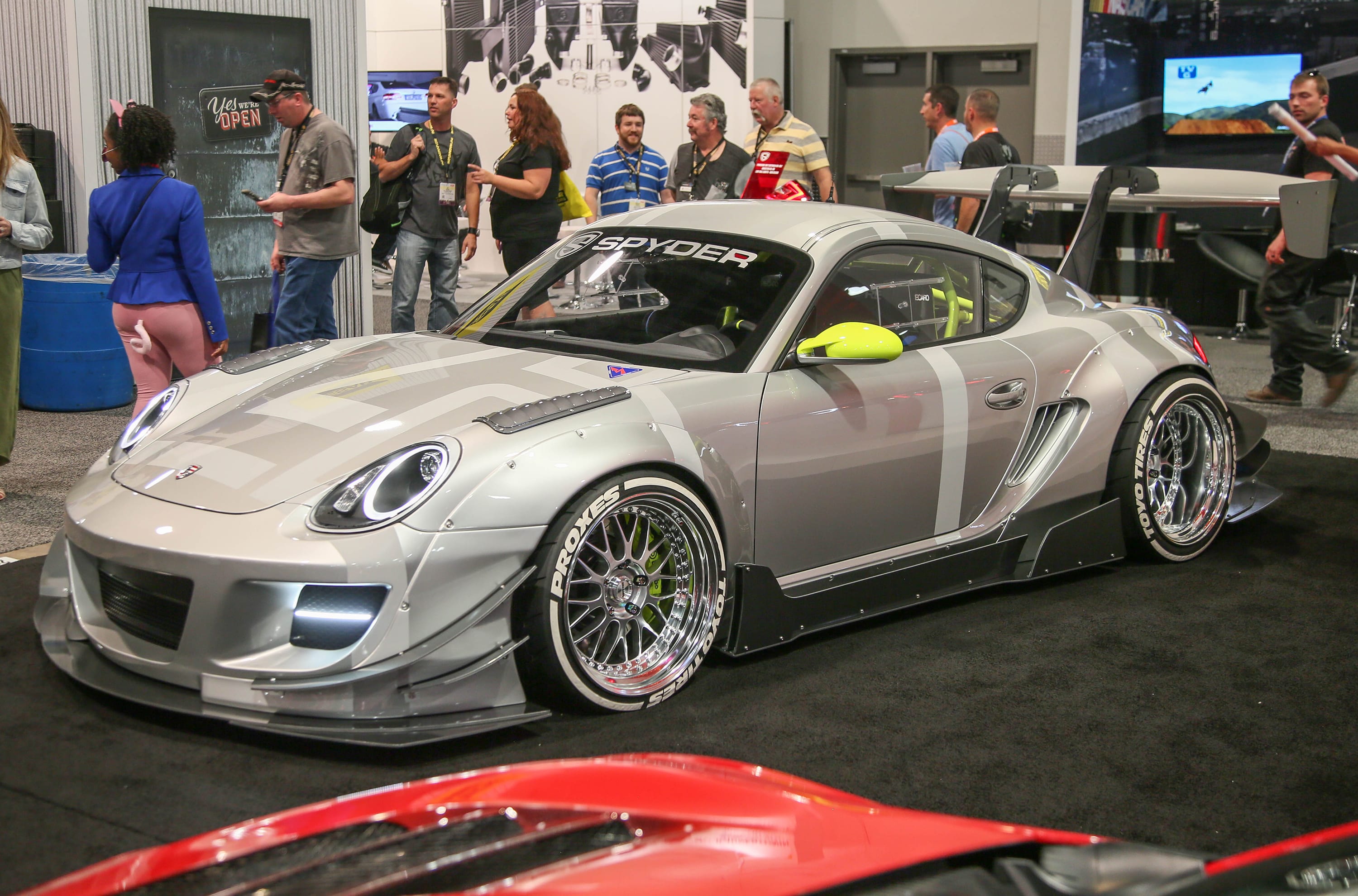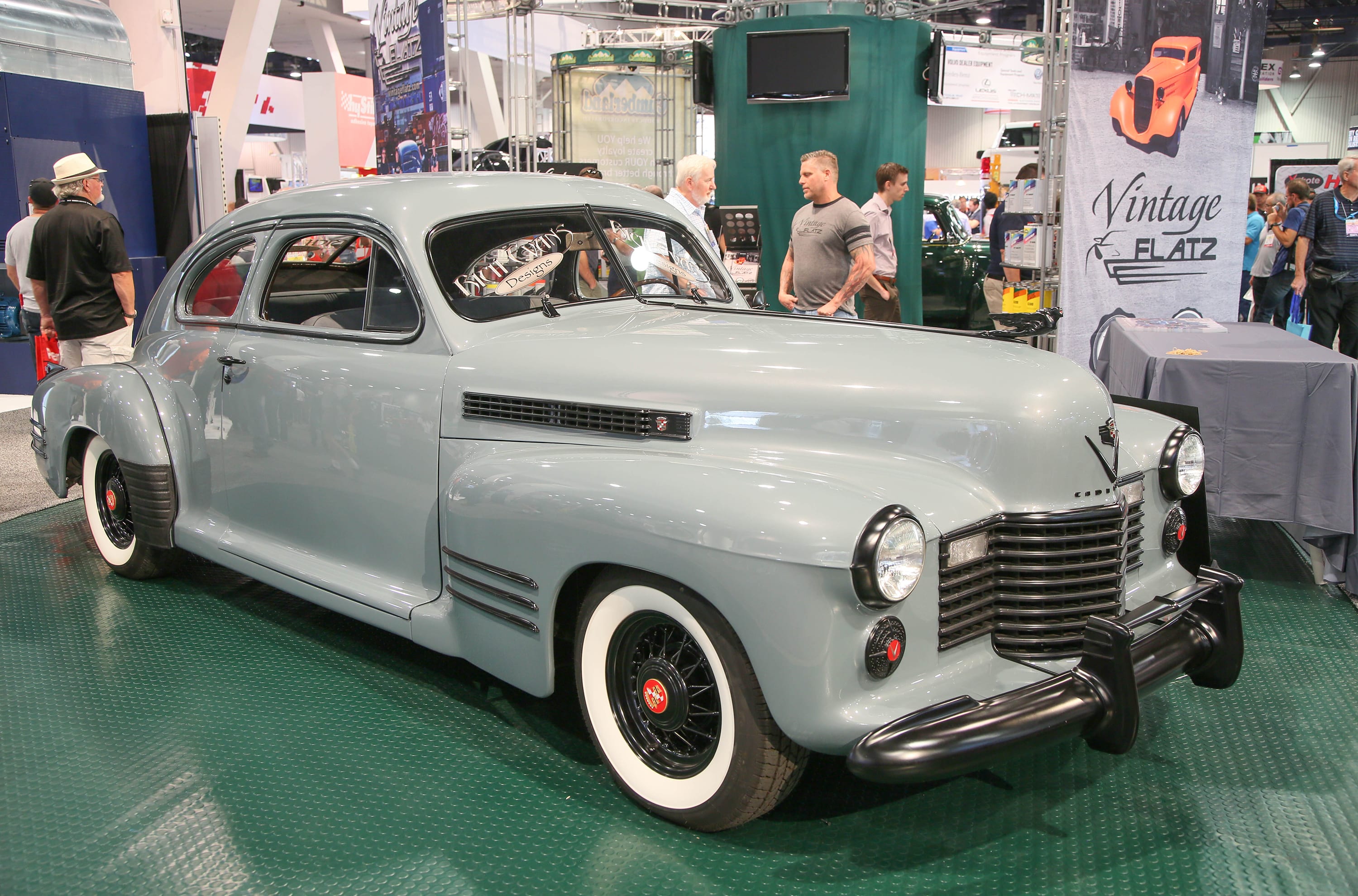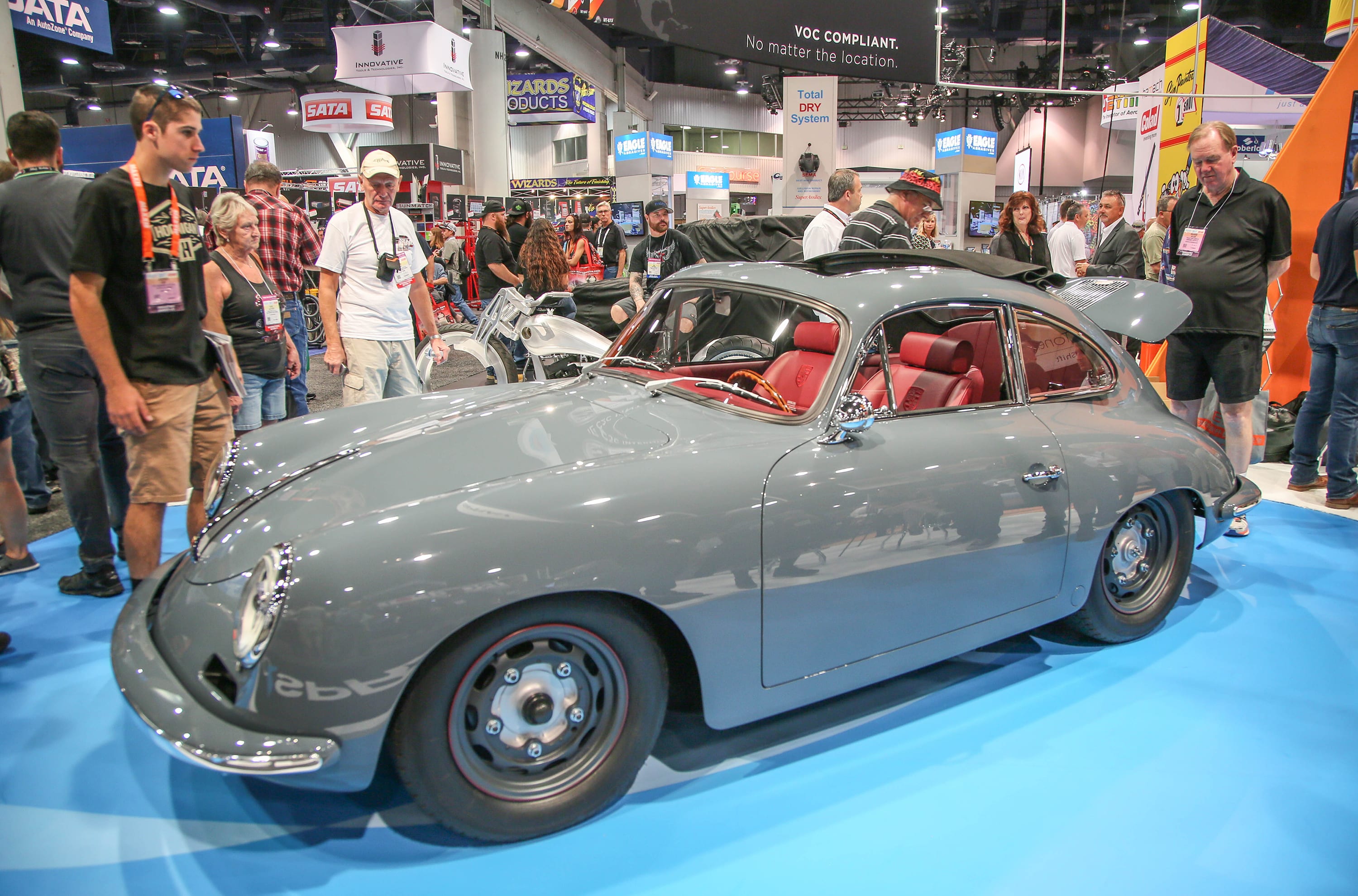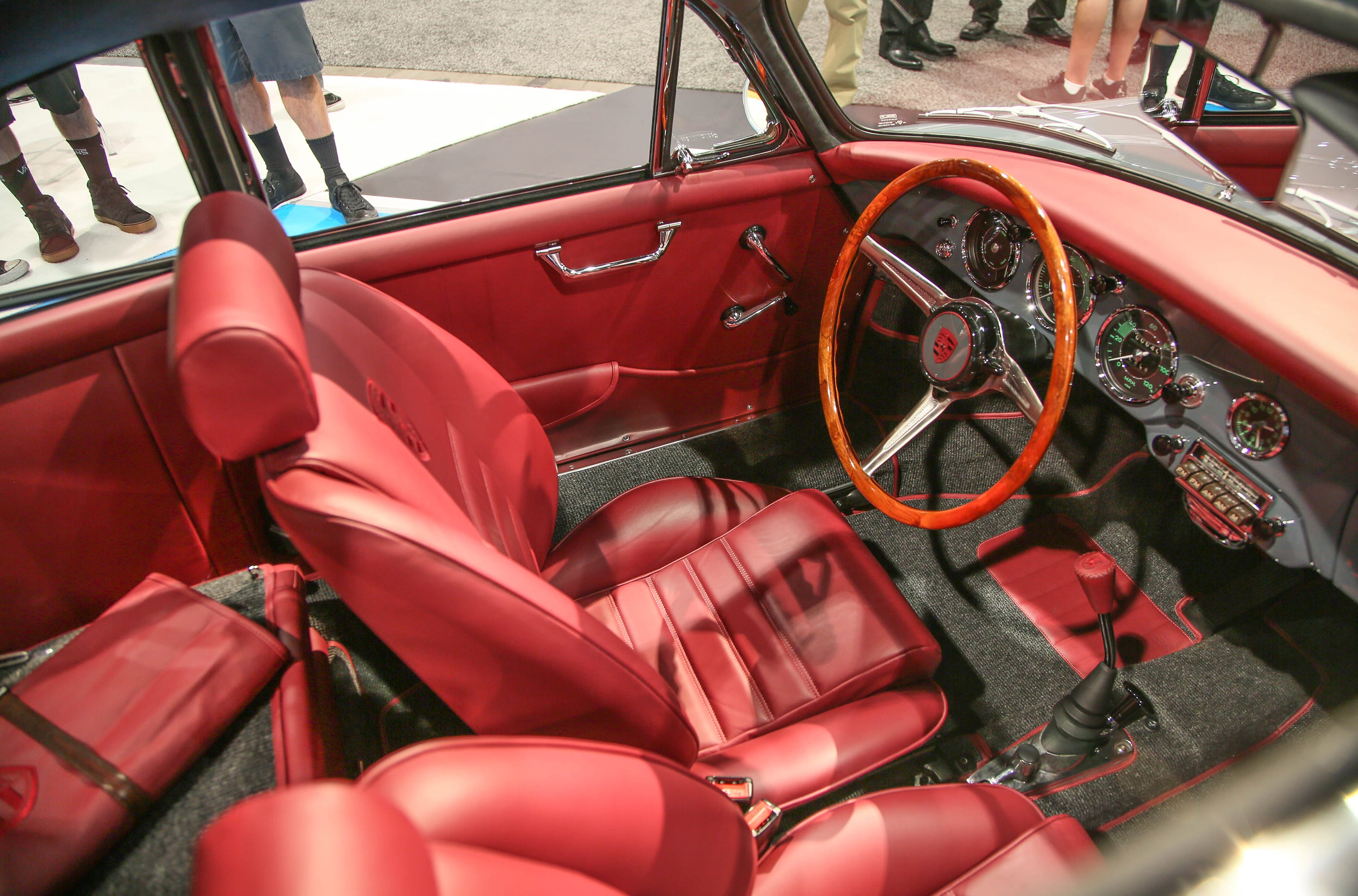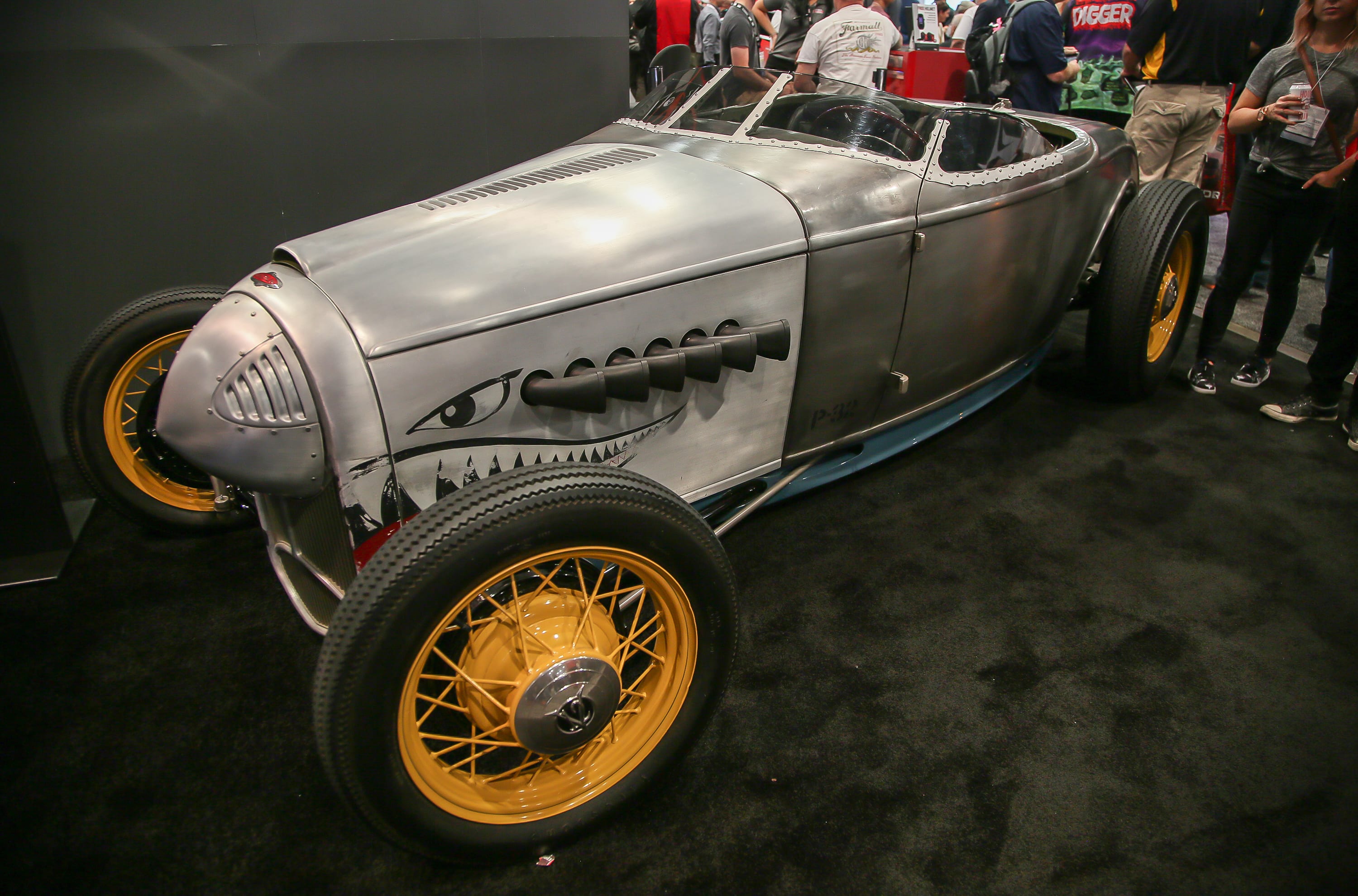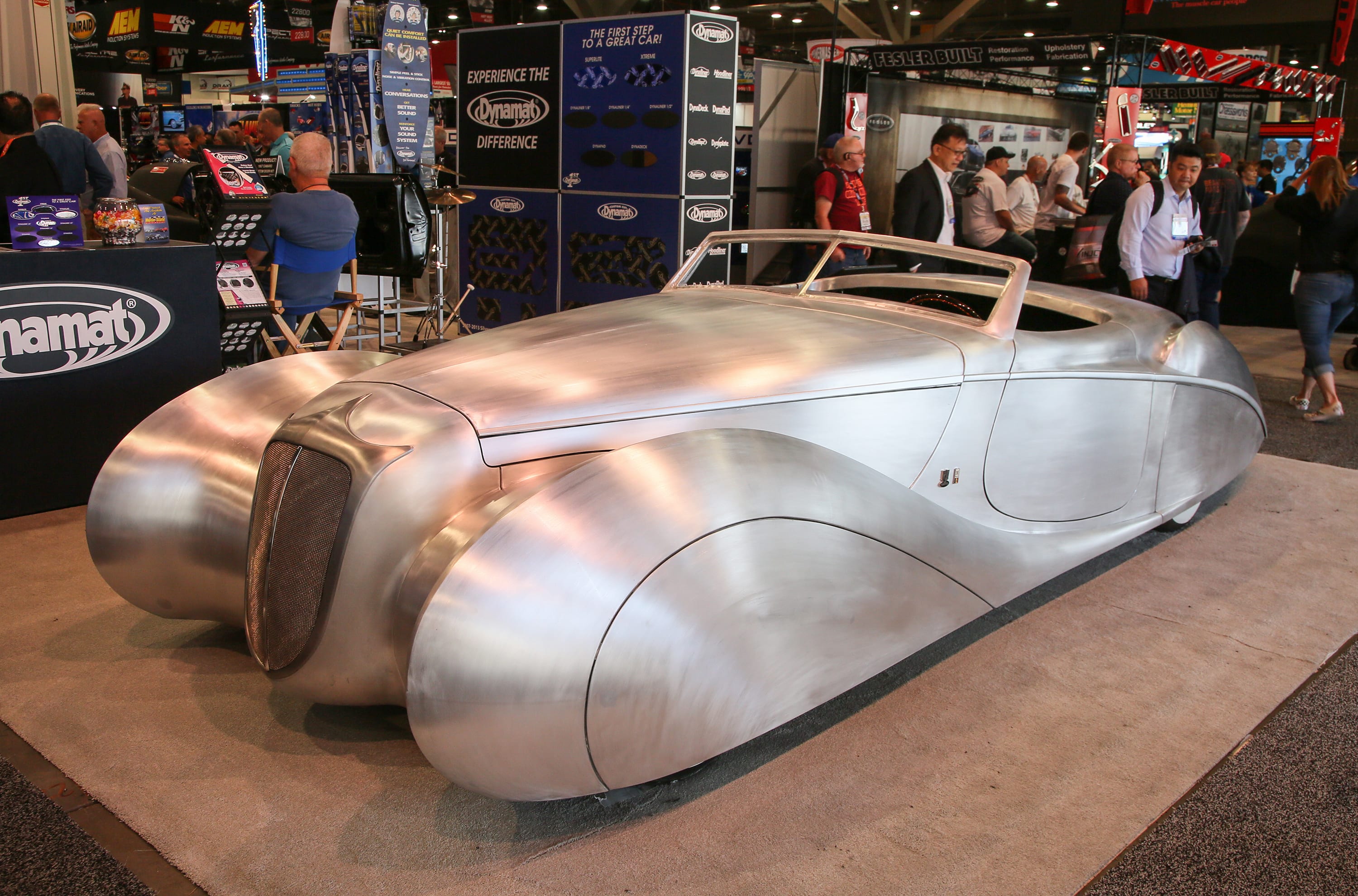Wild and Wonderful SEMA
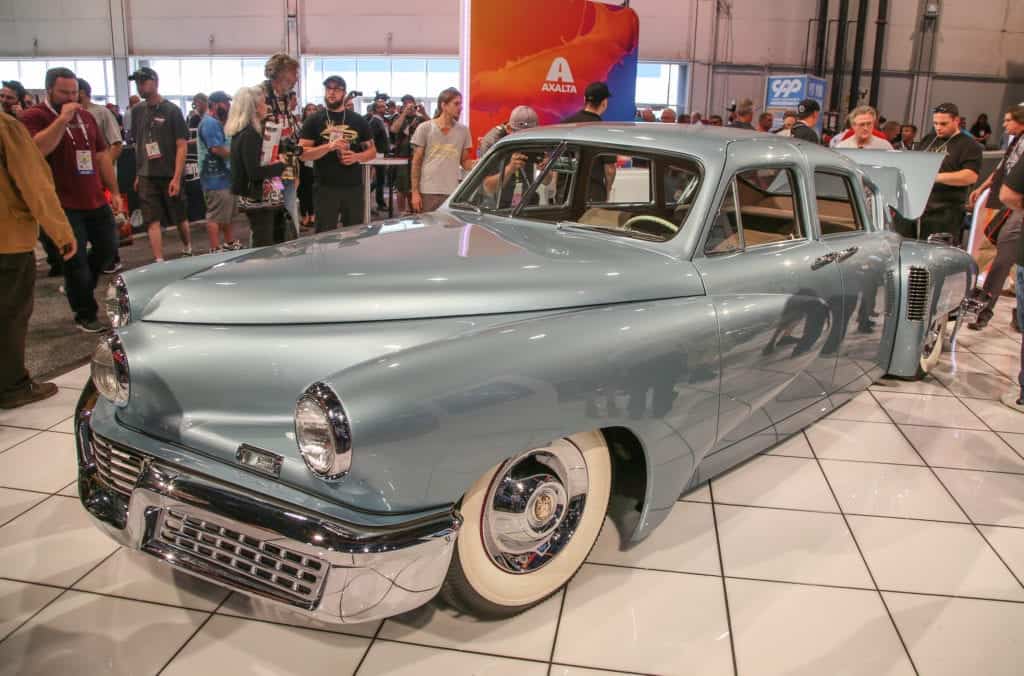
In a gathering of automotive professionals who’ve seen it all, the cars at the Specialty Equipment Manufacturers Association show in Las Vegas, SEMA for short, still have the power to stop onlookers in their tracks. At one display is a near exact reproduction Tucker 48 that on first glance wouldn’t look out of place on the Amelia Island lawn, except for the modern Cadillac drivetrain nestled in back. Or there is the Chip Foose-designed P32 “Street Fighter,” which is essentially a P51 Mustang World War II fighter plane on four wheels. Outside, a “slammed” Porsche 356 rests on the pavement thanks to air bags that adjust the suspension height. Still in bare, unpainted aluminum is Rick Dore’s “Illusion,” with stunning Figoni et Falaschi-style Delahaye body. And this is just the beginning.
What a contrast to the cars of the Collier Collection at Revs Institute.
When you wander through Revs Institute, what you see is a commitment to originality. Whether a car is untouched or fully restored, what matters is that the exterior, the interior and the mechanicals faithfully represent how the car emerged from the factory or race team shop, or in other cases, how the car appeared after a hard-fought racing career, scratches and all.
Why then would a museum committed to originality care about the Specialty Equipment Manufacturers Association show? After all, SEMA is the definitive trade show for the automotive aftermarket, whose sole purpose is to alter a vehicle away from how the manufacturer intended.
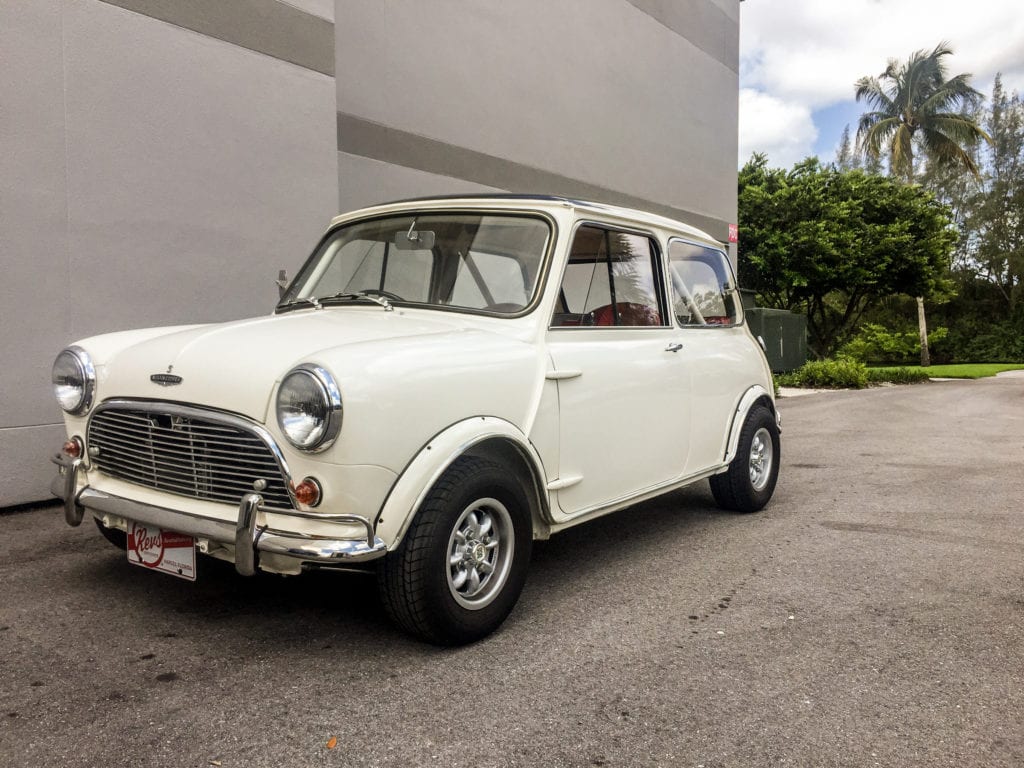
OR
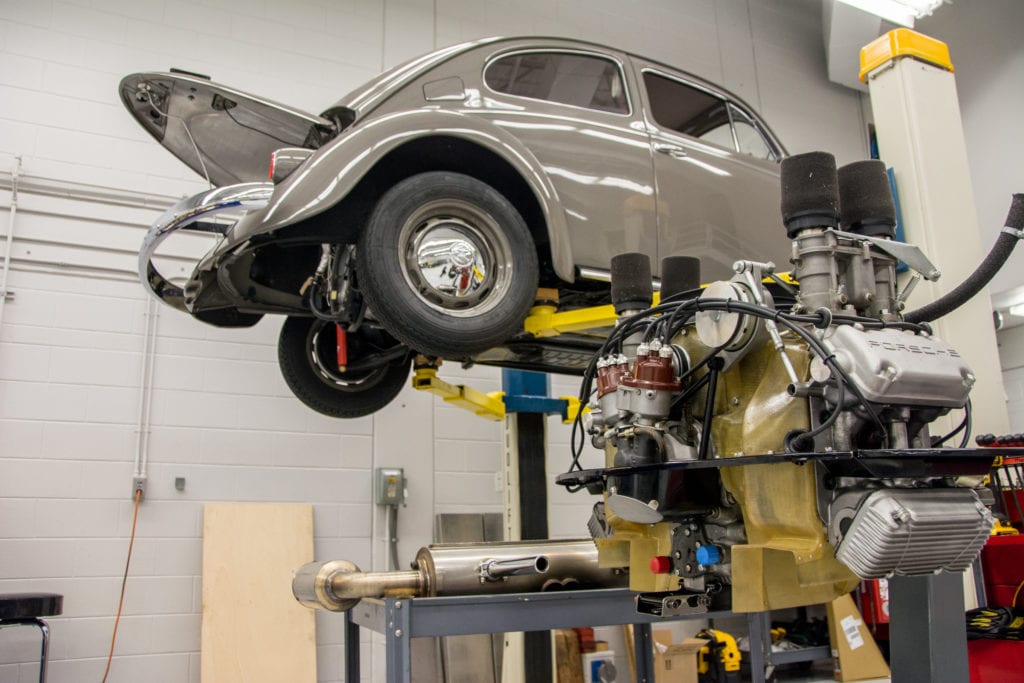
To start with, we also love hot rods at Revs Institute. Of the collection’s two Mini Coopers, one has its factory issued 70 horsepower motor and the other is a sleeper with a 1380-cc block, crossflow head, etc., coming in at about 135 horsepower. Our 1956 Volkswagen Beetle looks stock but sports a Porsche engine in back. The 1970 FAZA race car was a product of the most famous Fiat hot rodder, Carlo Abarth.
Additionally, Revs Institute is committed to documenting and championing the automobile’s role in society. To do that properly, you can’t ignore SEMA. The aftermarket business totals $41.2 billion annually. Some 2,400 companies exhibit at the SEMA show, displaying everything from wheels and tires to electronics to machine tools to paint equipment to dynamometers to…you get the idea. To draw in potential customers, many of the displays feature an automobile or truck and most are quite unusual. Even though the show is not open to the general public, attendees number 140,000, most of whom seem to be headed the same direction as you.
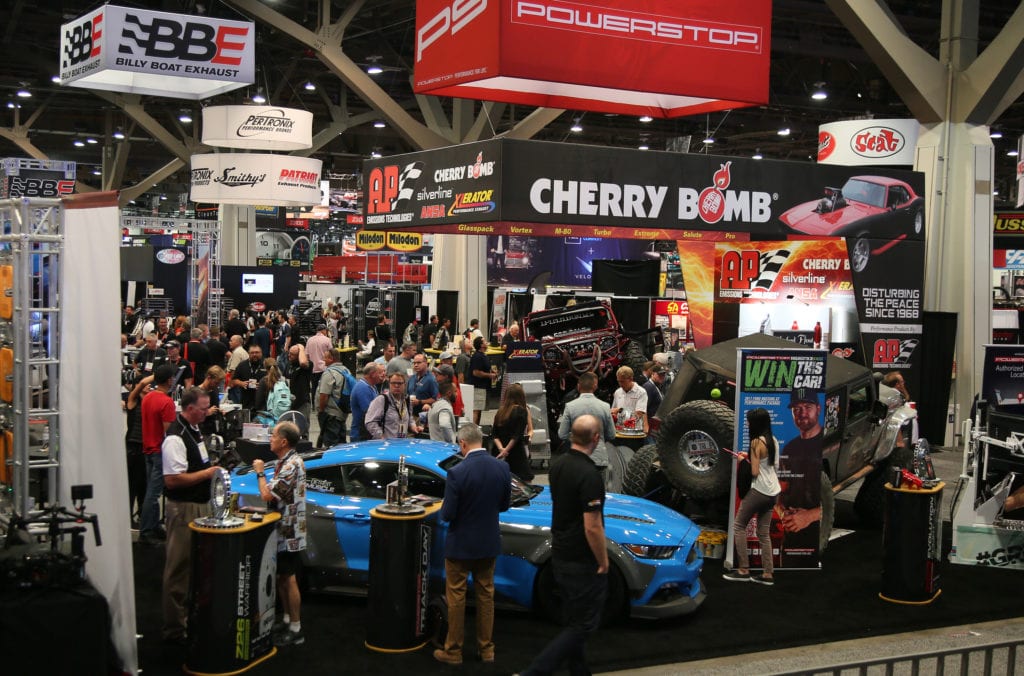
All this plays out across four halls of Las Vegas’ Convention Center. Not only are the galleries jammed, but so are the parking lots in front of the center, with still more vehicles on display and a few on smoking tires as they slip and slide around an impromptu race track.
While about half the display vehicles are pickup trucks jacked up so high you’d need a ladder to get in, the rest are cars. A few are stock – manufacturers Hyundai, Ford, Audi, Honda, Toyota and Chevrolet have displays – but the rest are modified muscle cars, classic hot rods and, of course, sports cars. Corvettes. Nissan Z cars. Honda NSXs. Rotary-powered Mazda RX-7s. Ersatz Cobras. And plenty of Porsches.
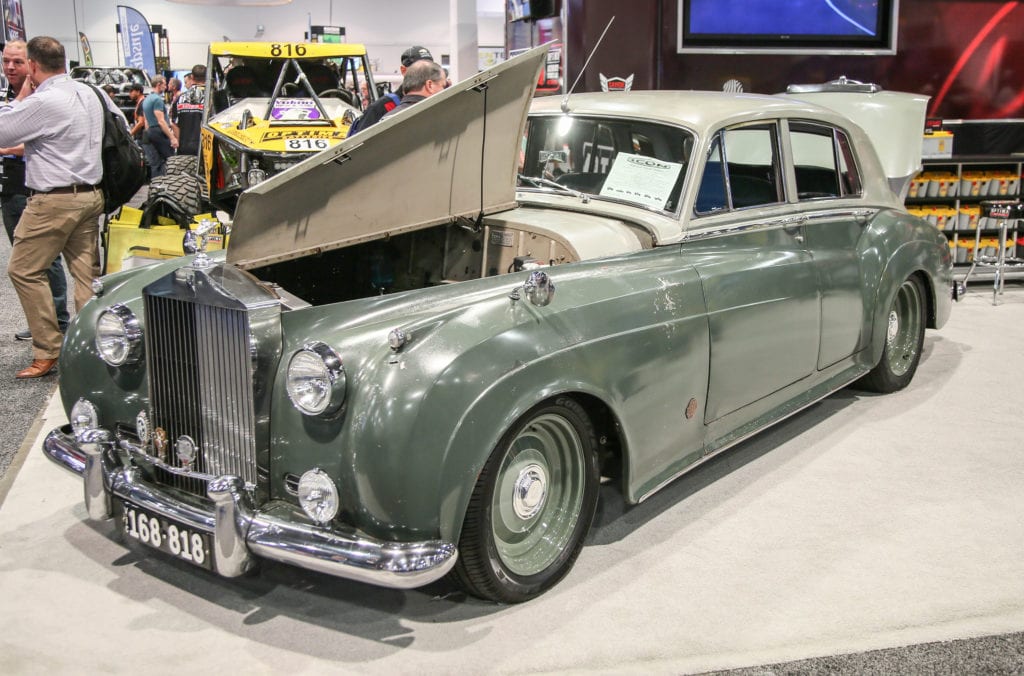
It seems no one in the crowd plays favorites. They check out everything. A 911 that looks ready for Le Mans, a 1932 Ford Highboy hot rod, a Datsun 510 station wagon with fender flares, a lowered Lincoln convertible with a Falconer V-12 engine, a 3-wheel Vanderhall or one of the many Lamborghinis. There were a number of vehicles representing a new trend, scruffy-looking old cars that hide totally modern drivetrains. One notable example was a 1958 Rolls Royce “Derelict” with a Chevy V-8 and what its maker, Icon, calls, “most of the key perversions & conveniences of modern vehicles.”
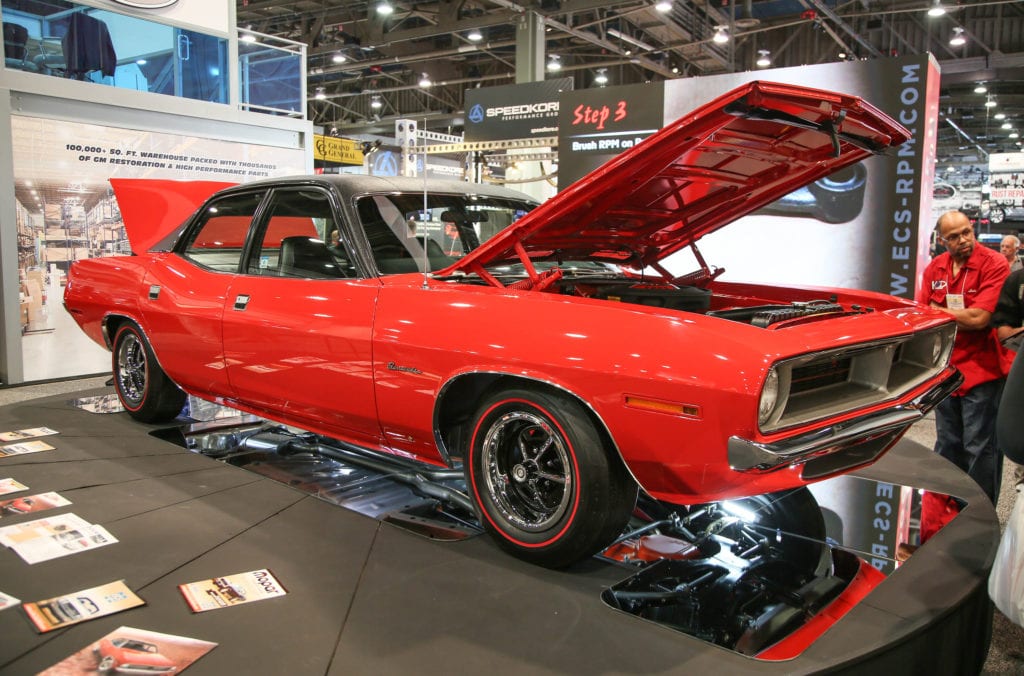
After walking miles through a show that fills every available nook of the 2 million sq. ft. Las Vegas Convention Center, at times you reach a saturation point where you feel like you’ve seen every modded Mustang in North America. And then, you look across and wonder, “Is that a 4-door 1970 Plymouth Barracuda that shouldn’t exist?” And around the corner is the Ford GT40 Mk IV that won Le Mans in 1967 and it is still wearing the original tires it finished the race in. With a renewed burst of energy off you go again, knowing you won’t be able to see everything yet feeling determined to try…
